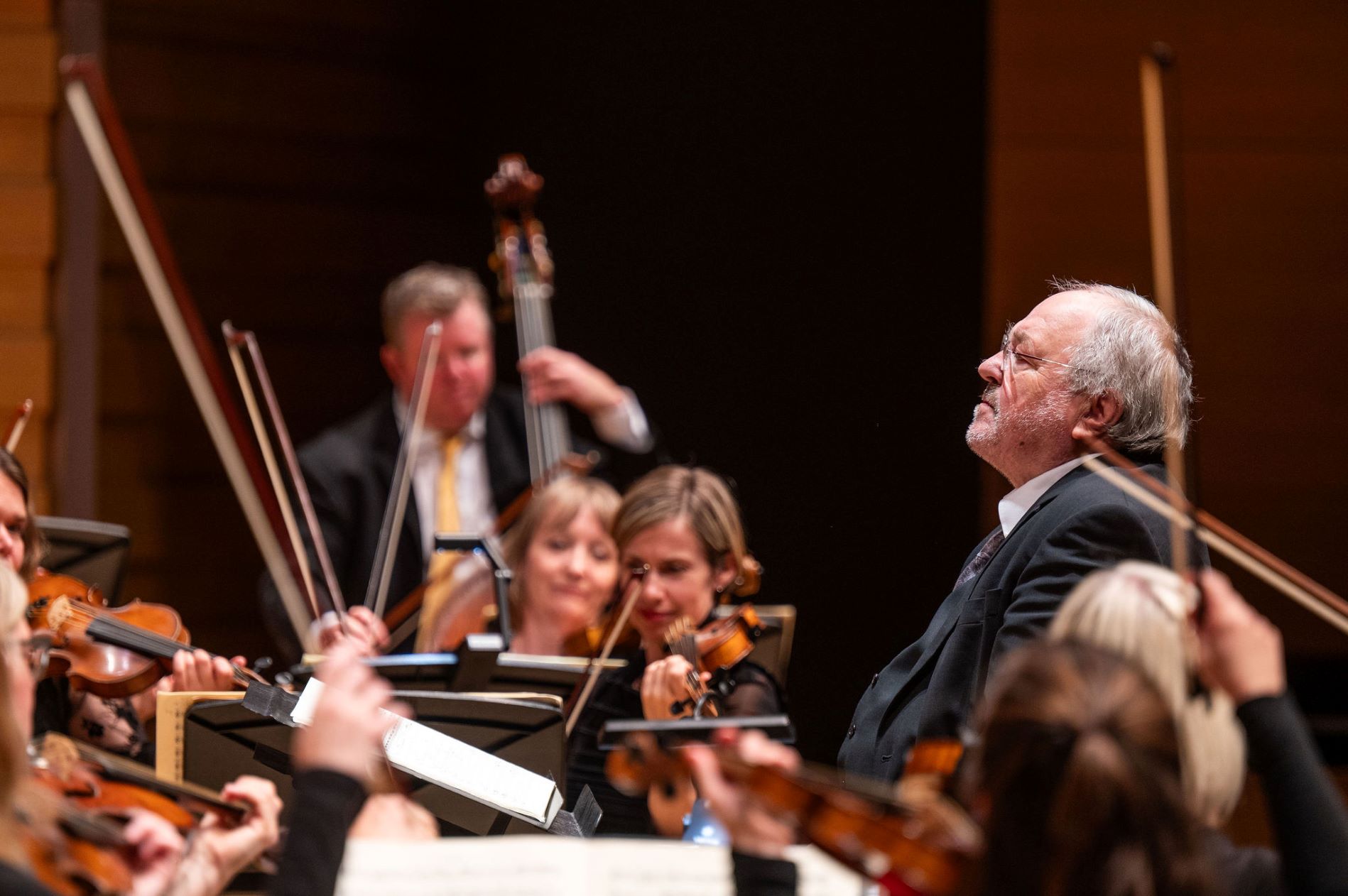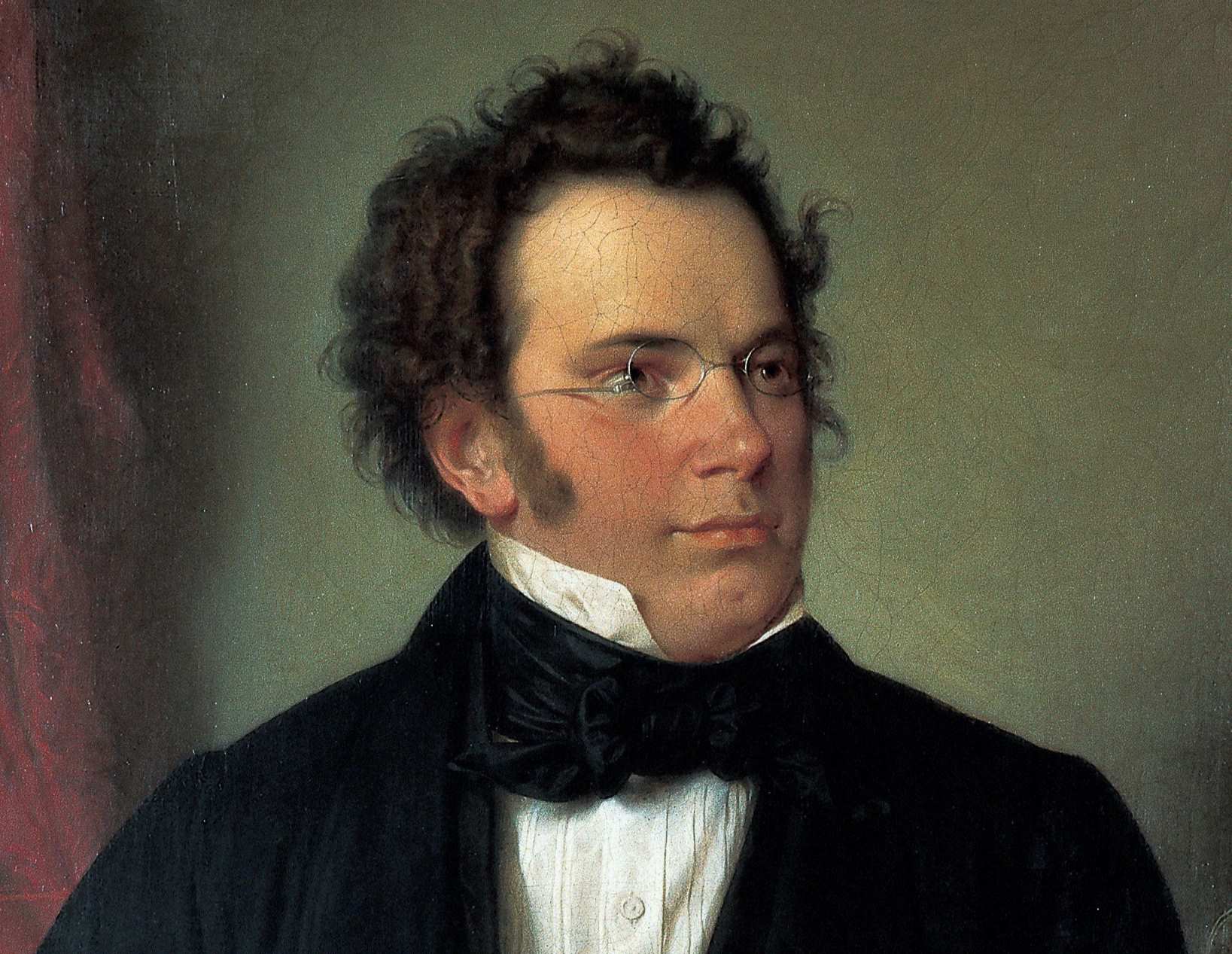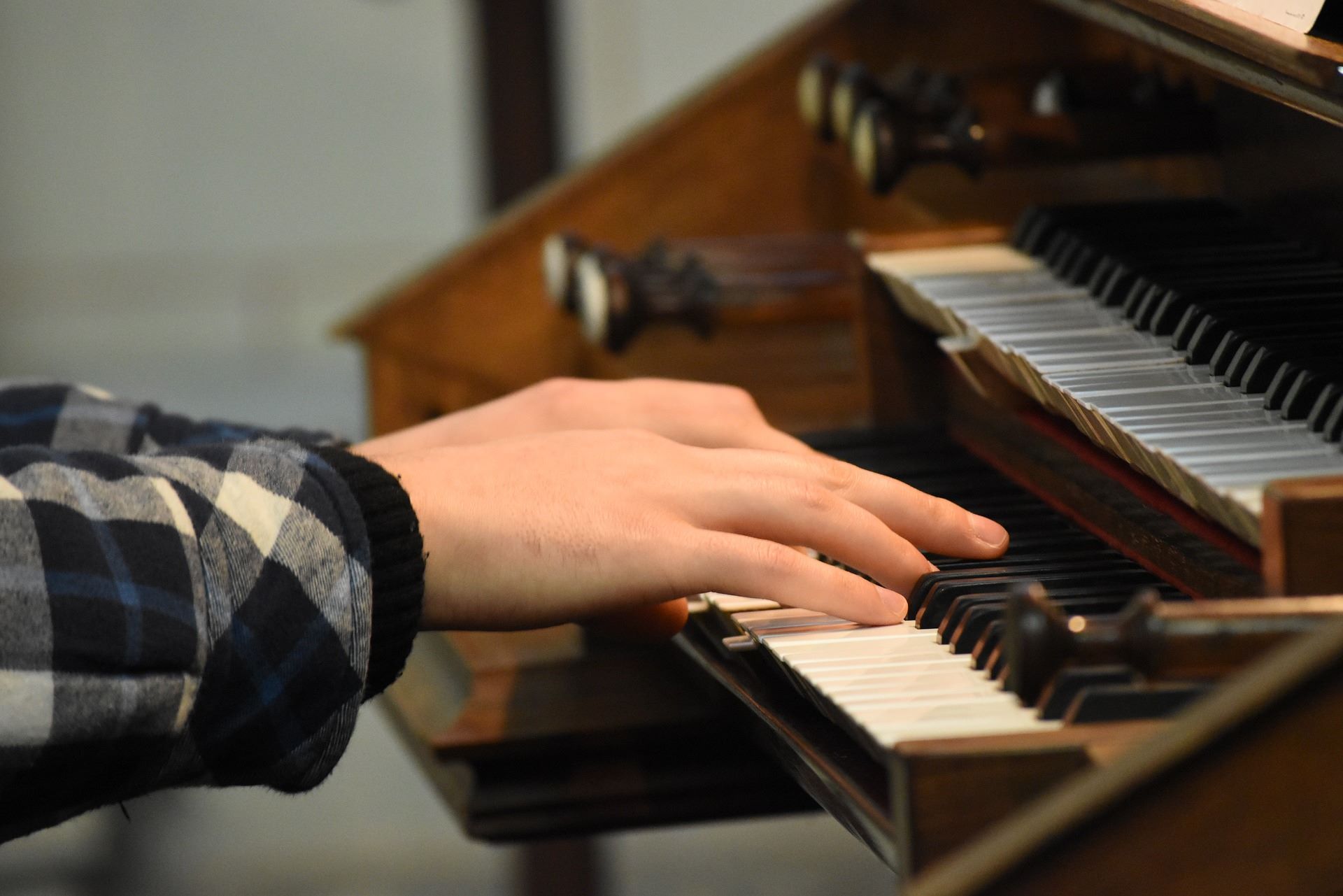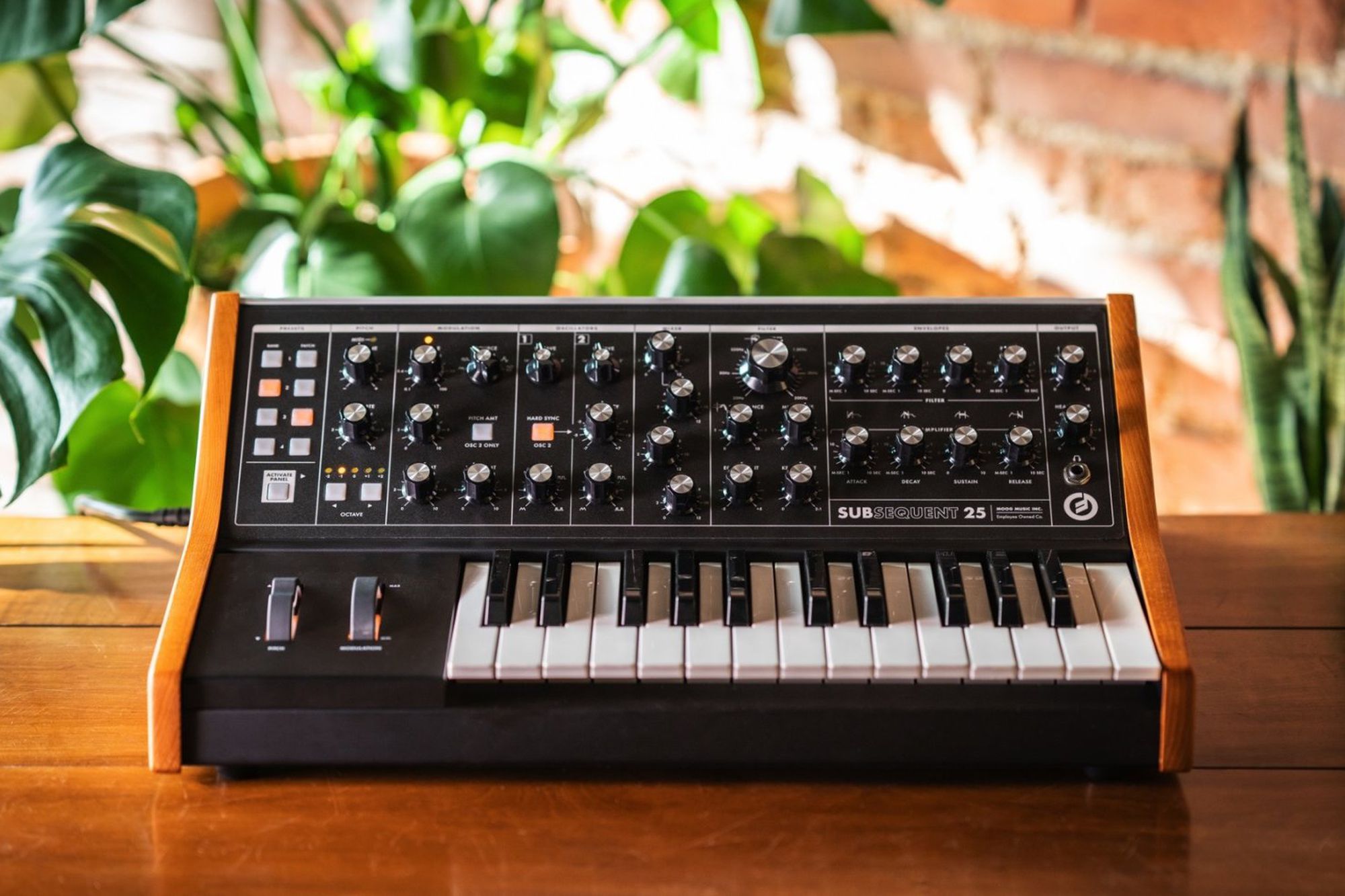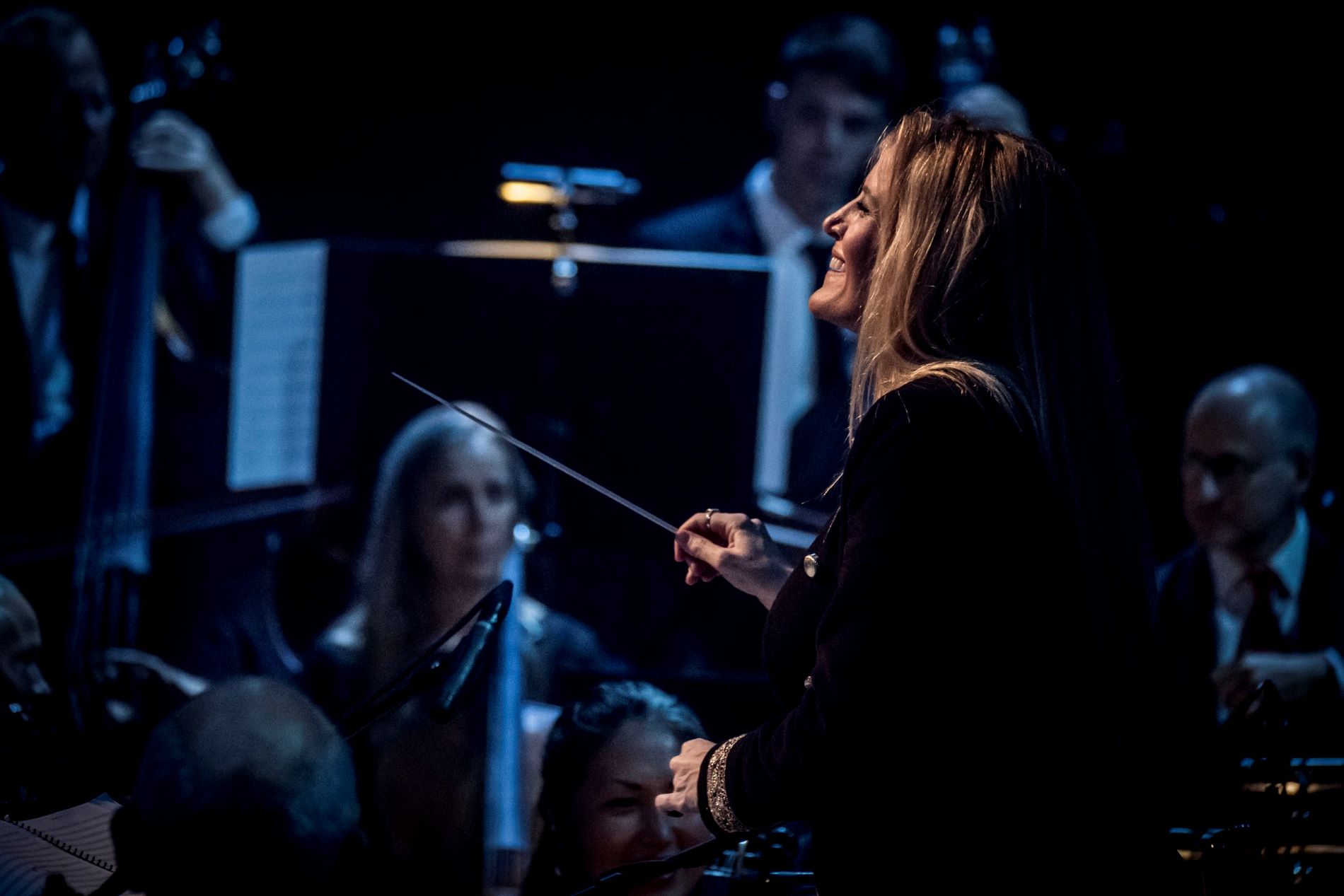

Symphony
Who Invented Symphony
Modified: January 22, 2024
Discover the history and origin of the symphony genre. Learn about the pioneering composers who invented symphonies and shaped classical music.
(Many of the links in this article redirect to a specific reviewed product. Your purchase of these products through affiliate links helps to generate commission for AudioLover.com, at no extra cost. Learn more)
Table of Contents
Introduction
The symphony is a magnificent and captivating musical form that has stood the test of time. It is a genre that has been celebrated for centuries, captivating audiences with its grandeur, emotional depth, and intricate musical arrangements. But who exactly invented the symphony?
While it is difficult to attribute the invention of the symphony to a single individual, the development of this musical form can be traced back to the early origins of symphonic music. Over the course of history, the symphony has evolved and transformed, with influential composers leaving their mark and shaping its progression.
In this article, we will explore the fascinating history of the symphony, from its early origins to its modern interpretations. We will dive into the works of influential composers, discuss the development of different symphonic eras, and examine the experimentation and innovation that has shaped this genre into what it is today.
So, buckle up and join us on this captivating journey through the symphony’s history to uncover the genius behind its creation.
Early Origins of Symphonic Music
The roots of symphonic music can be traced back to the ancient civilizations of Egypt, Greece, and Rome, where large ensembles of musicians would perform together. These early musical gatherings were known for their vibrant and energetic performances, often featuring a variety of instruments such as drums, flutes, and stringed instruments.
However, it was during the Baroque period in the 17th century that the foundations of the symphony started to take shape. Composers such as Giovanni Gabrieli and Heinrich Biber began to compose instrumental pieces for larger ensembles, creating a platform for the development of symphonic music.
One of the key figures in the early evolution of the symphony was Johann Stamitz, a composer and violinist from the 18th century. Stamitz is often credited with popularizing the four-movement structure of the symphony, consisting of a fast, slow, minuet, and fast movement. His innovative compositions paved the way for future composers to explore and expand upon the symphonic form.
It was also during the Classical period that the symphony became more widely recognized as a distinct musical genre. Composers such as Franz Joseph Haydn and Wolfgang Amadeus Mozart played pivotal roles in shaping the symphony during this time. Haydn, often referred to as the “Father of the Symphony,” composed over 100 symphonies throughout his career, pushing the boundaries of the form and solidifying its structure.
Mozart, on the other hand, brought a sense of elegance and emotional depth to the symphony. His compositions, such as Symphony No. 40 and Symphony No. 41, displayed his natural ability to blend melodic beauty with intricate orchestral interplay.
Overall, the early origins of symphonic music laid the groundwork for the development and refinement of the symphony as a distinct musical form. It was through the contributions of various composers and the evolution of musical techniques that the symphony eventually became the grand and captivating genre it is known as today.
The Rise of the Classical Symphony
The Classical period of music, which spanned from the mid-18th century to the early 19th century, was a time of significant growth and innovation for the symphony. During this period, the symphony underwent a transformation, evolving from its early origins into a refined and structured musical form.
One of the key figures in the rise of the Classical symphony was Franz Joseph Haydn. Haydn, the prolific Austrian composer, composed an impressive number of symphonies, contributing greatly to the development and popularization of the genre. His compositions, such as Symphony No. 94, known as the “Surprise Symphony,” showcased his mastery of form and structure, while incorporating surprises and unexpected elements to captivate audiences.
Another influential composer during this period was Wolfgang Amadeus Mozart. Mozart’s symphonies, such as Symphony No. 40, displayed his incredible musical genius, combining intricate melodies and harmonies with precise orchestration. His works were characterized by their emotional depth and rich musical textures, setting a standard for symphonic composition that would continue to inspire future generations.
As the Classical period progressed, composers began to experiment with the symphony’s structure and form. One notable example is Ludwig van Beethoven, who bridged the gap between the Classical and Romantic periods. Beethoven’s symphonies, such as Symphony No. 3, also known as the “Eroica Symphony,” brought a newfound sense of drama and emotional intensity to the symphony. His bold use of dynamics, innovative harmonic progressions, and thematic development pushed the boundaries of the genre and opened new possibilities for symphonic composition.
The rise of the Classical symphony also coincided with the growth of orchestras and concert halls, providing a platform for these majestic musical works to be performed and appreciated by larger audiences. Orchestras expanded in size and instrumentation, enabling composers to create more intricate and elaborate symphonic arrangements.
Overall, the rise of the Classical symphony marked a significant period of growth and transformation for the genre. Composers like Haydn, Mozart, and Beethoven pushed the boundaries of symphonic composition, creating timeless works that continue to be celebrated and performed to this day.
Influential Composers and Their Symphonies
The development of the symphony as a prominent musical form was greatly influenced by the creativity and genius of several composers throughout history. These composers crafted symphonies that not only showcased their individual styles and innovations but also left a lasting impact on the evolution of the genre.
One of the most influential composers in the realm of symphonic music is Ludwig van Beethoven. Beethoven’s symphonies, particularly his Symphony No. 5 and Symphony No. 9, are regarded as masterpieces. Symphony No. 5, with its iconic opening motif and dramatic intensity, stands as a testament to Beethoven’s ability to captivate listeners with powerful and emotive musical storytelling. Symphony No. 9, on the other hand, elevates the symphony to new heights by introducing vocal soloists and a chorus in the final movement, culminating in the celebrated “Ode to Joy.”
Another prominent composer who made significant contributions to the symphony is Gustav Mahler. Mahler’s symphonies, such as Symphony No. 5 and Symphony No. 9, are known for their expansive scope and emotional depth. Mahler pushed the boundaries of symphonic conventions, incorporating vocal elements, complex orchestration, and potent thematic development to create symphonic works that delve into existential questions and evoke intense emotional responses.
Pyotr Ilyich Tchaikovsky’s symphonic works, including Symphony No. 4 and Symphony No. 5, are revered for their rich melodies and powerful orchestration. Tchaikovsky’s ability to intertwine melancholic beauty with moments of triumphant grandeur is exemplified in these symphonies, drawing listeners into a world of intense emotions and musical storytelling.
Johannes Brahms, often considered one of the greatest composers of the Romantic era, contributed significantly to the symphonic repertoire with his four symphonies. Known for their meticulous craftsmanship and complex harmonic structures, Brahms’ symphonies, particularly Symphony No. 1 and Symphony No. 4, demonstrate his mastery of symphonic form and his ability to weave together intricate musical ideas.
Lastly, it is essential to recognize the contributions of Antonín Dvořák. Dvořák’s Symphony No. 9, also known as the “New World Symphony,” is a beloved masterpiece that combines elements of his Czech heritage with American folk influences. This symphony portrays a sense of nostalgia, hope, and the vibrancy of a new land, solidifying Dvořák’s place as a prominent symphonic composer.
These composers and their symphonies represent only a fraction of the many talented individuals who have left their mark on the symphonic genre. Their creative vision, innovation, and ability to touch the hearts of listeners continue to inspire and shape the symphonies composed in the modern era.
The Development of the Romantic Symphony
The Romantic period, which spanned from the early 19th century to the early 20th century, brought about a significant evolution in the symphonic genre. During this time, composers embraced emotional expressiveness, dramatic storytelling, and expanded orchestral capabilities, resulting in the development of the Romantic symphony.
One of the key features of the Romantic symphony was its increased length and complexity. Composers, such as Hector Berlioz with his groundbreaking “Symphonie Fantastique,” expanded the symphony into a multi-movement work that told a musical narrative. Berlioz’s symphony, which depicts a passionate and hallucinatory tale of unrequited love, demonstrated the newfound freedom and exploration within symphonic composition.
Franz Schubert, another influential composer of the Romantic era, contributed to the development of the symphony with his Symphony No. 9, also known as the “Great” Symphony. This symphony, with its grandeur, melodic richness, and majestic orchestration, exemplifies the romantic spirit and showcases Schubert’s extraordinary craftsmanship.
One of the most celebrated composers of the Romantic symphony is Pyotr Ilyich Tchaikovsky. His works, such as Symphony No. 6, known as the “Pathétique,” and Symphony No. 5, are characterized by their expressive melodies, lush harmonies, and passionate emotions. Tchaikovsky’s ability to evoke a wide range of emotions and create powerful musical climaxes is a hallmark of the Romantic symphonic style.
Gustav Mahler, renowned for his deep emotional expression and immense orchestral forces, made significant contributions to the Romantic symphony. His symphonies, such as Symphony No. 1, known as the “Titan,” and Symphony No. 5, are marked by their expansive scope, innovative use of orchestration, and profound exploration of the human condition.
The Romantic symphony also saw the emergence of nationalistic elements, with composers drawing inspiration from their cultural heritage. Examples include Antonín Dvořák’s Symphony No. 9, also known as the “New World Symphony,” which incorporates American folk melodies, and Jean Sibelius’ Symphony No. 2, which reflects the spirit of Finnish nationalism.
Overall, the development of the Romantic symphony allowed composers to push the boundaries of emotion and storytelling within the symphonic genre. The expansion of orchestral possibilities, the exploration of new musical forms, and the incorporation of nationalistic elements all contributed to the rich and diverse tapestry of the Romantic symphony.
Experimentation and Innovation in Symphony Composition
The world of symphony composition has always been a fertile ground for experimentation and innovation. Throughout history, composers from various periods and styles have pushed the boundaries and challenged the traditional norms of symphonic music, resulting in groundbreaking and revolutionary works.
One of the early pioneers of experimentation in symphony composition was Ludwig van Beethoven. His symphonies, particularly Symphony No. 3 “Eroica,” showcased his willingness to break away from the established musical conventions of the time. Beethoven experimented with form, structure, and thematic development, pushing the boundaries of the symphony and laying the foundation for future compositional innovations.
As the Romantic era unfolded, composers embraced a more emotional and expressive approach to symphony composition. For instance, Richard Wagner, known primarily for his operas, introduced innovative techniques in his symphonic works such as the “Tristan und Isolde” Prelude. Wagner’s use of chromaticism, unresolved dissonances, and unconventional harmonic progressions challenged the traditional harmonic language and paved the way for a new era of expressive symphonic music.
During the 20th century, composers continued to experiment with symphony composition, exploring new soundscapes and expanding the possibilities of the genre. Igor Stravinsky, with his groundbreaking ballet “The Rite of Spring,” shattered expectations with its unconventional rhythms, dissonant harmonies, and primal energy. The piece caused quite a controversy during its premiere, showcasing the power of experimentation in symphony composition.
Arnold Schoenberg, a pioneer of atonal and twelve-tone music, also made significant innovations in symphony composition. His “Five Pieces for Orchestra” challenged traditional tonality, exploring the use of dissonance and unconventional harmonic structures. Schoenberg’s work opened new avenues for symphony composers to push the boundaries of musical expression.
Today, symphony composition continues to evolve with composers exploring new techniques and merging different styles and genres. Contemporary composers like John Adams, Philip Glass, and Tan Dun have embraced minimalist, post-minimalist, and cross-cultural influences, resulting in bold and innovative symphonic compositions.
Technology has also played a role in fostering experimentation in symphony composition. Composers now have access to advanced recording techniques, electronic sound manipulation, and computer-generated sounds, allowing them to create unique and immersive symphonic experiences.
Overall, experimentation and innovation have been vital to the evolution of symphony composition throughout history. Composers who dared to challenge conventions and push the boundaries of the genre have contributed to the rich tapestry of symphonic music, ensuring its continued relevance and excitement in the modern era.
Modern Interpretations of the Symphony
The symphony, while rooted in tradition and history, continues to thrive and evolve in the modern era. Composers and orchestras are reinterpreting the symphony, infusing it with fresh perspectives, and exploring new sonic landscapes.
One area of modern interpretation of the symphony is the incorporation of multimedia elements. Composers are integrating visuals, lighting, and projections to create multi-sensory experiences. This fusion of music and technology adds an extra dimension to the symphony, engaging the audience in a more immersive and captivating way.
Composers are also taking inspiration from diverse musical genres and cultural traditions, blending them with the symphonic form. The incorporation of jazz, rock, world music, and electronic elements into the symphony creates exciting fusions and expands the boundaries of the genre. Composers like Esa-Pekka Salonen and Mason Bates are known for infusing their symphonic works with electronic sounds and influences from popular music styles.
Another modern interpretation of the symphony is the exploration of non-traditional structures and formats. Some composers are breaking away from the traditional four-movement structure, opting for single-movement symphonies or works with unconventional forms. This experimentation allows for new and dynamic approaches to symphonic composition, challenging preconceived notions and providing fresh perspectives.
Contemporary symphony orchestras are also embracing diversity and inclusivity in their programming. They are commissioning works from composers of different ethnic and cultural backgrounds, amplifying underrepresented voices in the symphonic world. This approach not only brings new perspectives to the symphony but also fosters inclusivity and cultural dialogue within the genre.
Additionally, modern technology has opened up new possibilities in symphony performance and recording. Live streaming, virtual reality, and augmented reality are transforming symphony experiences, allowing audiences from around the world to witness performances in real-time and engage with the music in innovative ways. These technological advancements have made the symphony more accessible and have expanded its reach beyond traditional concert halls.
While some purists may argue that the symphony should remain loyal to its classical roots, embracing modern interpretations ensures the genre’s relevance and vitality in today’s ever-changing musical landscape. The symphony continues to be a canvas for artistic exploration, embracing new avenues of expression, and captivating audiences with its grandeur and emotional depth.
Conclusion
The symphony, with its rich history spanning centuries, has proven to be a resilient and ever-evolving genre of music. From its early origins in ancient civilizations to the groundbreaking works of contemporary composers, the symphony has captivated audiences with its grandeur, emotional depth, and innovative compositions.
Throughout history, composers have pushed the boundaries of symphonic music, experimenting with form, structure, instrumentation, and thematic development. Figures such as Beethoven, Mahler, and Stravinsky have left an indelible mark on the symphony, shaping its evolution and inspiring future generations of composers.
The symphony has seen various stylistic and cultural interpretations, reflecting the diverse influences of different musical periods. From the Classical era’s meticulous craftsmanship to the Romantic era’s emotional expressiveness and the modern era’s integration of multimedia and diverse musical genres, the symphony has embraced change and innovation.
Today, the symphony continues to thrive through modern interpretations, where technology, multicultural influences, and experimental approaches enrich the genre. Composers and orchestras are pushing the boundaries of symphonic composition, creating immersive experiences and engaging new audiences through multimedia elements, non-traditional structures, and inclusive programming.
The symphony has also been embraced by modern technology, allowing for novel ways of experiencing and sharing symphonic performances. Live streaming, virtual reality, and augmented reality have made symphony music more accessible and amplified its reach globally.
As the symphony continues to evolve, it remains a testament to the power of human creativity and expression. Its ability to stir emotions, tell stories, and transcend boundaries has ensured its enduring place in the world of music.
So, whether we listen to a classical masterpiece or experience a modern interpretation, the symphony continues to inspire and move us. It unites the past, present, and future, showcasing the immense talent and innovation of composers throughout history.
In the end, the symphony reminds us of the universal language of music, its ability to transcend time and connect us on a profound level. It is a testament to the incredible human capacity for artistic expression and a gift that continues to enrich our lives.

